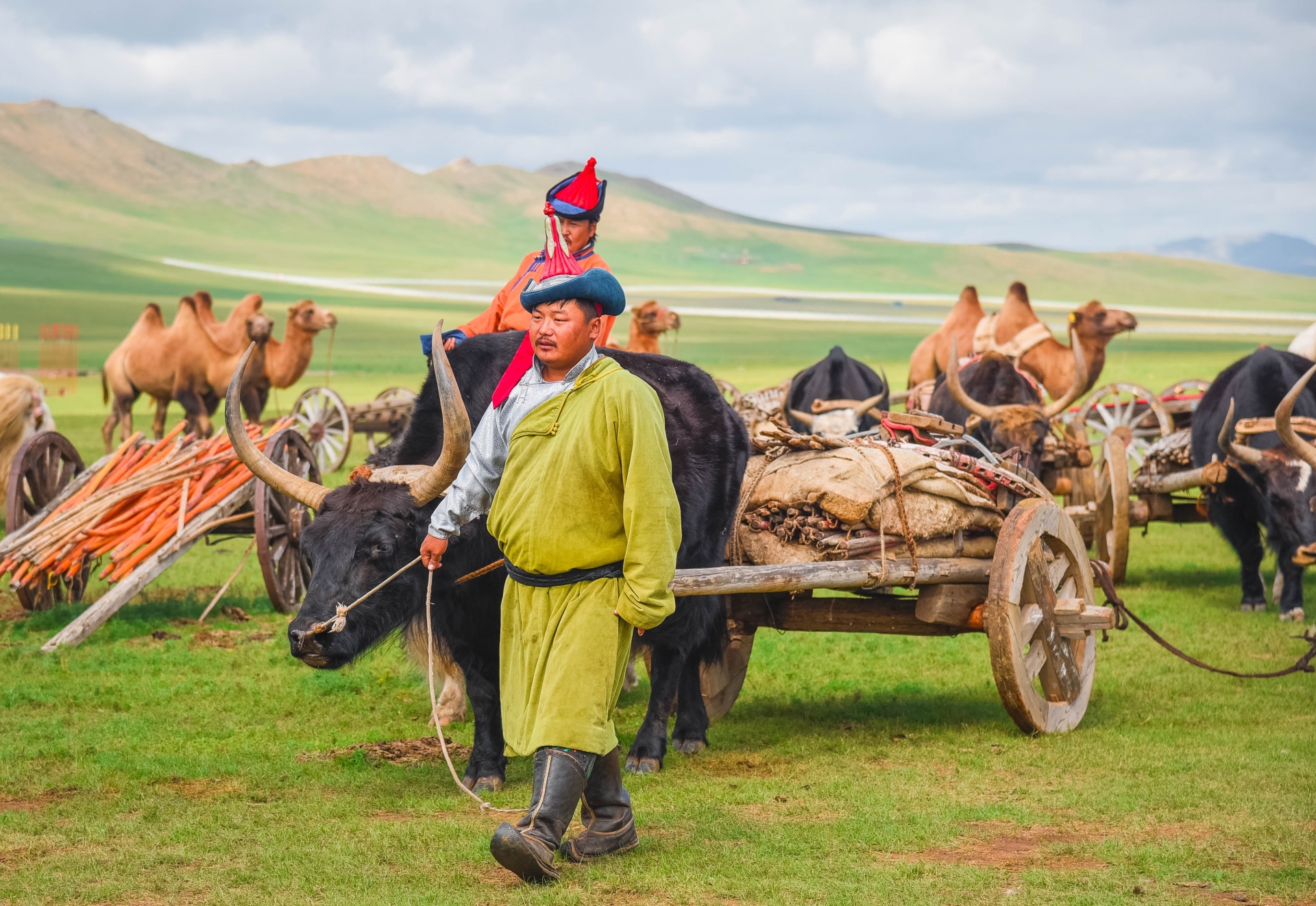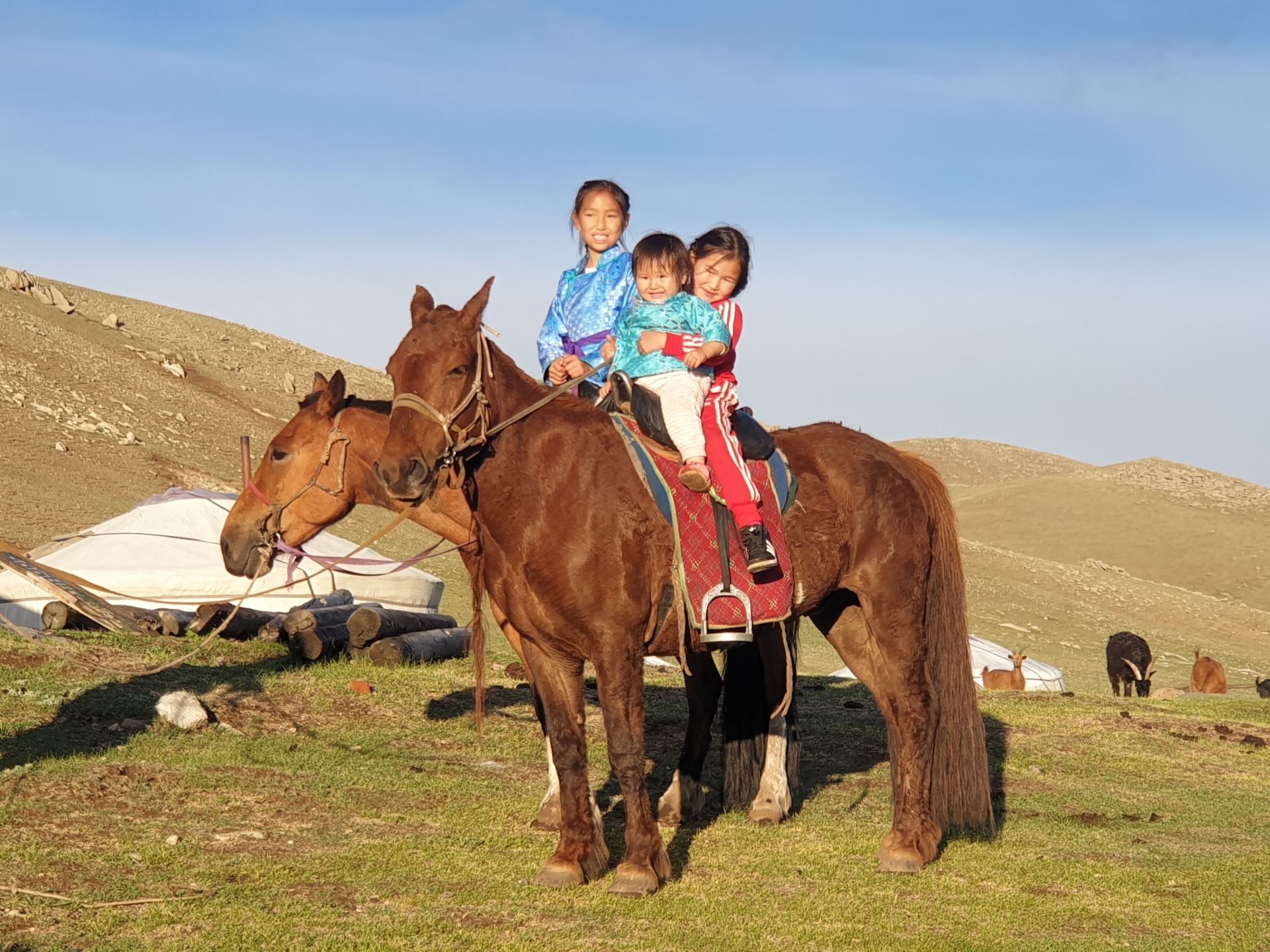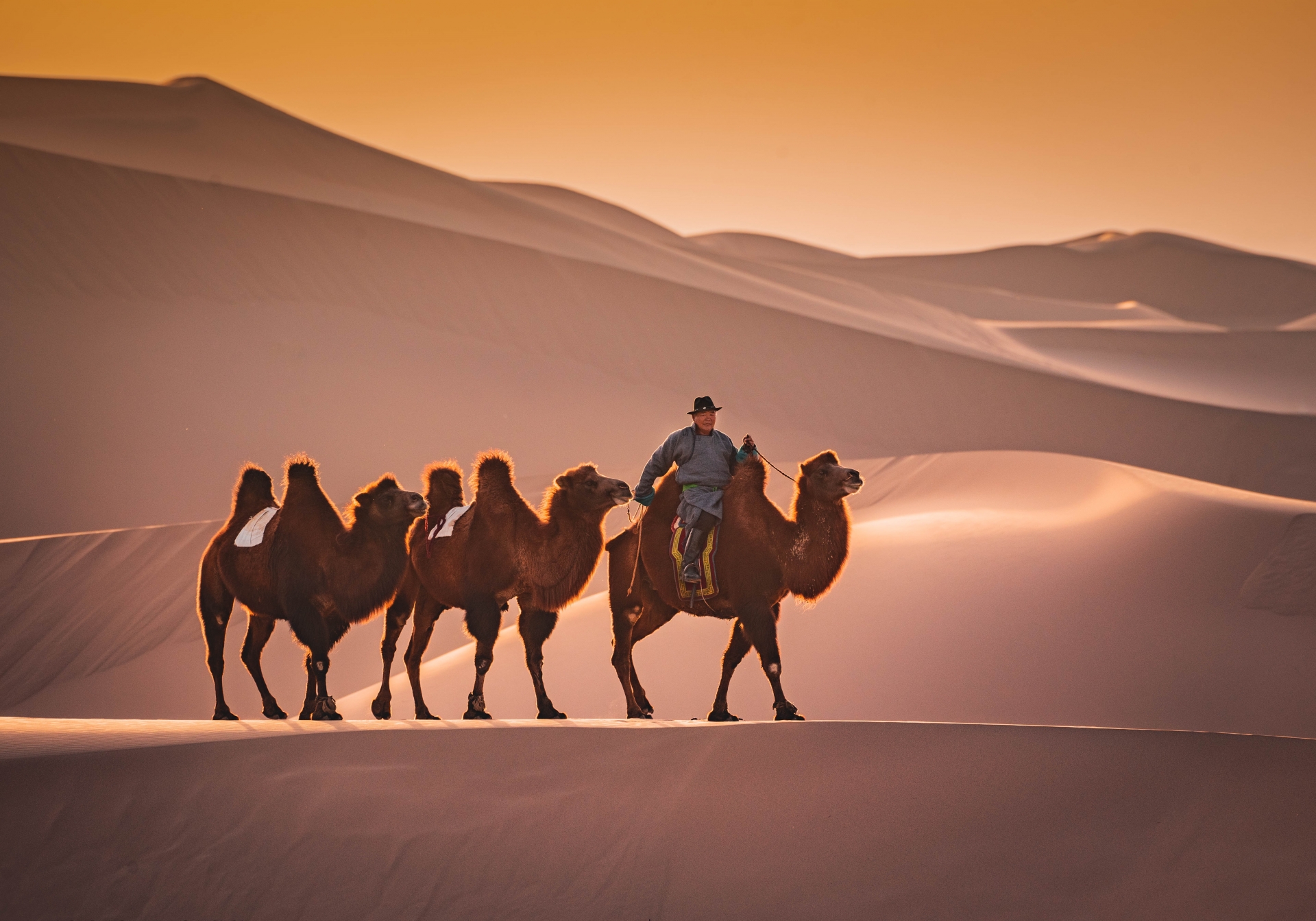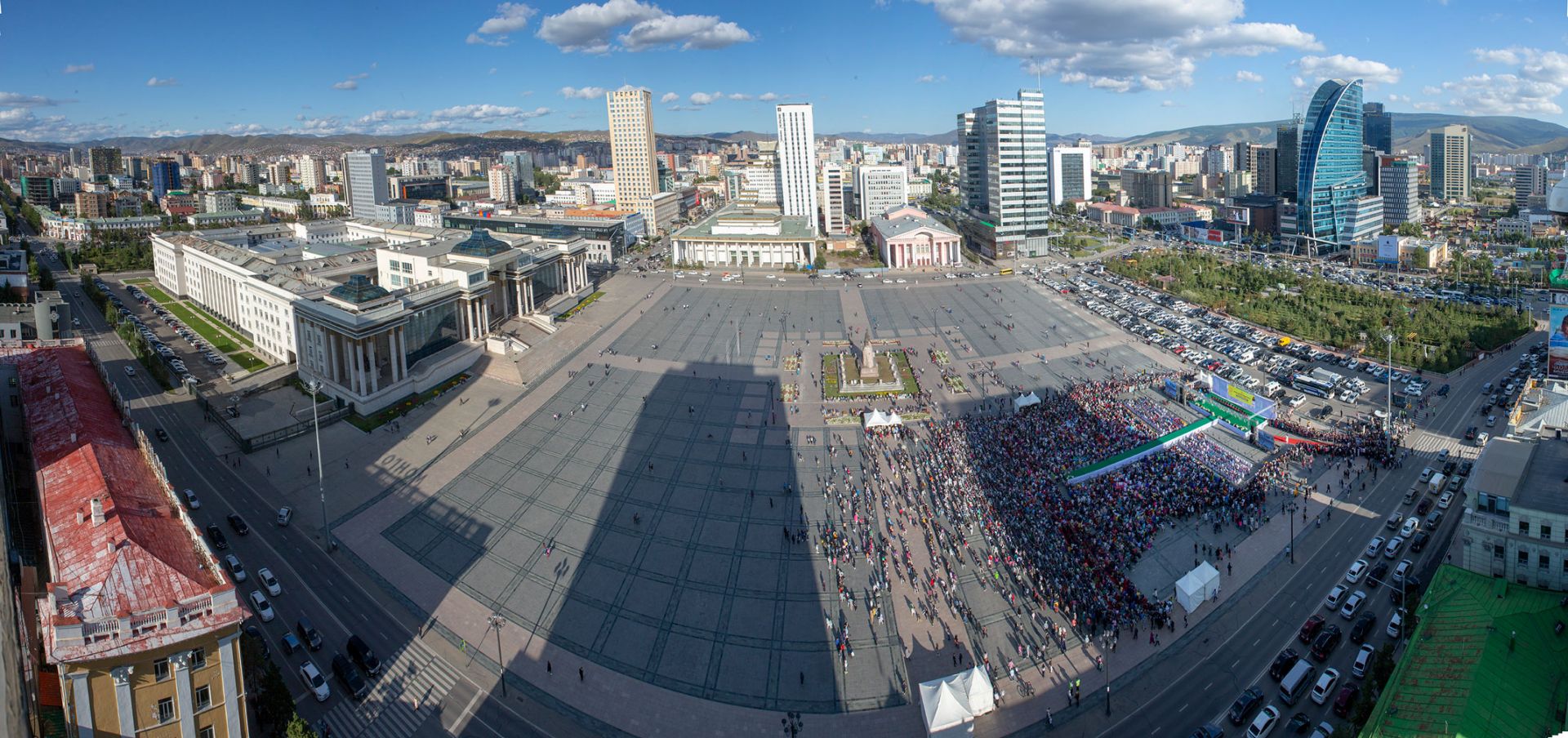Main Text
Western Mongolia has a unique combination of desert, steppe, taiga, tundra and mountains.
This land is home to many ethnic groups that have lived together in harmony since ancient times. Diverse in wildlife and people, Western Mongolia has a rich history of traditional dances (biyelgee), throat singing (khoomei), and tsuur (flute-like instrument) inherited from ancestors.
ALTAI TAVAN BOGD MOUNTAIN
Altai Tavan Bogd mountain of the Altai mountain Range is located on the western edge of Mongolia and is the highest peak in the country. Mongolians call it “the roof of the country”. Altai Tavan Bogd has five high peaks (tavan means five in Mongolian), which have three large interconnected glaciers. The largest is the Potanin Glacier, which is 14 km long. This area’s climate is extremely unpredictable. You may observe four seasons in one day: the sun will shine, but then it may snow or rain. In 1996, this area officially became a protected Natural Park. Since 2012, the mountain range has been nationally sacred and the Mongolian president visits the mountain for worship each year.


KHOID TSENHERIIN CAVE
The walls and ceiling of Khoid Tsenheriin (Northern Blue) Cave, 25 km from Mankhan soum in Khovd province, is home to paintings by Central Asian tribes during the Palaeolithic Age. Large birds, camels, mammals, buffalo, and trees are painted with deep red and beige pigment. These animals inhabited Mongolian territory in ancient times, but are now extinct. The paintings’ content and composition make them an important part of Palaeolithic history and culture studies.
KHARKHIRAA TURGEN MOUNTAINS
The Kharkhiraa Turgen mountains are twin mountains with impressive peaks. They are part of the Altai mountain Range. Kharkhiraa reaches 4,037 meters high, while Turgen's peak is known as Deglii Tsagaan and has an elevation of 3,965 meters. Kharkhiraa and Turgen are divided by a passage called Kharkhiraa. There are over 10 icy mountain peaks and glaciers in the Kharkhiraa and Turgen mountains, which account for 20 per cent of the glaciated area of Mongolia. Olon Nuuriin Valley lays between these mountains and has many small lakes. In rocky areas a rare flower called Vansemberuu grows.
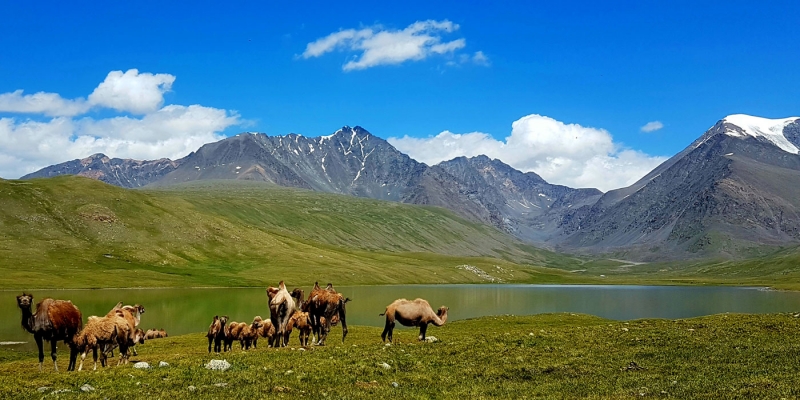

HOME TO GOBI BEAR – EEJ (MOTHER) KHAIRKHAN MOUNTAIN
Eej Khairkhan is a unique formation located in Tsogt sum of Gobi-Altai province. The area has rich wildlife and rare birds such as partridges, Mongolian ground jays, and Great Bustards. The blue mountain of the desert is also home to the “never seen” Gobi bear, wild Bactrian camel, and drought-resistant saxaul trees that absorb sunshine and thermal energy.
The blue mountain of the From 1992, the state classified this 22, 475 hectare zone in the nature reserve and the region is thus protected from now on. The granite formations of Eej Khairkhan are enthroned and revered by the local people. Especially the symbolic rock formations such as womb rocks for purification, men rocks for a large family, couple rocks for marriage, ingot rocks for wealth, etc. On the eastern slope of Eej Khairkhan mountain are nine pools called “New Pots” which Top attraction of the mountain. The pots have a diameter of 1-6 m. The first 5 pots are 40-50 cm apart and easily accessible. The pots have depths of 2-8 m. Due to the slippery surface, it will be difficult to reach the 6th and the next pot and it is not recommended to try.
UVS LAKE
Uvs lake is the birthplace of the Hunnus, Turks and Skiffs who left an unforgettable mark on world history. The lake’s basin is the largest untouched watershed in Central Asia. This area is a natural wonder, a treasure chest of 40,000 archaeological artifacts. In 2003, it was registered on the UNESCO World Heritage Sites list. Uvs lake is the largest lake in Mongolia covering 3,350 sq. km.


GOLDEN EAGLES AND HUNTERS
National Geographic photographer David Edwards dubbed golden eagles “dinosaurs with feathers.” The bird is special to the Kazakhs who live in the western boundaries of Mongolia. When you enter a Kazakh family’s house, you first greet the owner of the house, but do not forget to greet the golden eagle, also a member of the family, who will be sitting inside the house. When spotting prey, a Kazakh hunter takes the hood off the golden eagle and lets it fly. It’s amazing to see how the golden eagle spreads its wings and flies freely, as if it was never at a human’s mercy. Its natural instincts are revived and it forges ahead. Mighty hunters with their eagles gather for the Eagle Festival every year.
Western Mongolia is perfect for hiking and trekking of all levels. The landscape from the top of the mountains is indeed magnificent, and will surely take your breath away.
KHOTON AND KHURGAN LAKES
Khoton and Khurgan lakes are freshwater lakes in Altai Tavan Bogd National Park. It lies at the foot of the Altai Mountains at an elevation of about 2,000 meters above sea level. It is fed by the Khuiten River from the east and other rivers from the north. With an area of 50 square kilometers, it is the country's twenty-sixth largest lake by surface area. It has a maximum depth of 8.58 meters.

